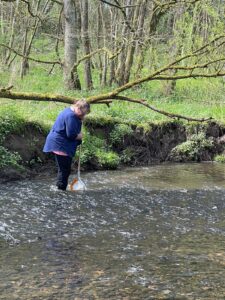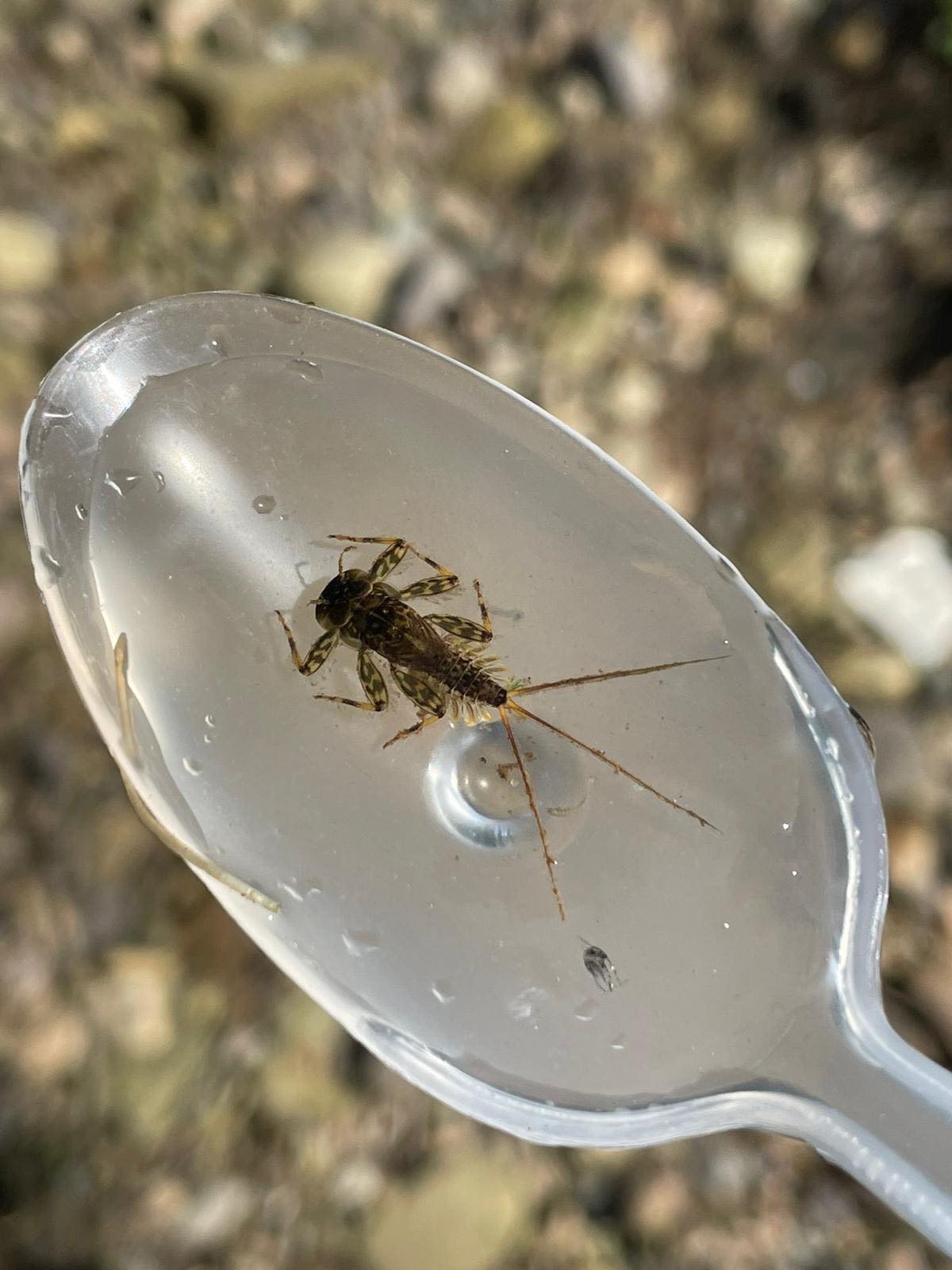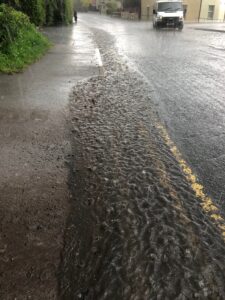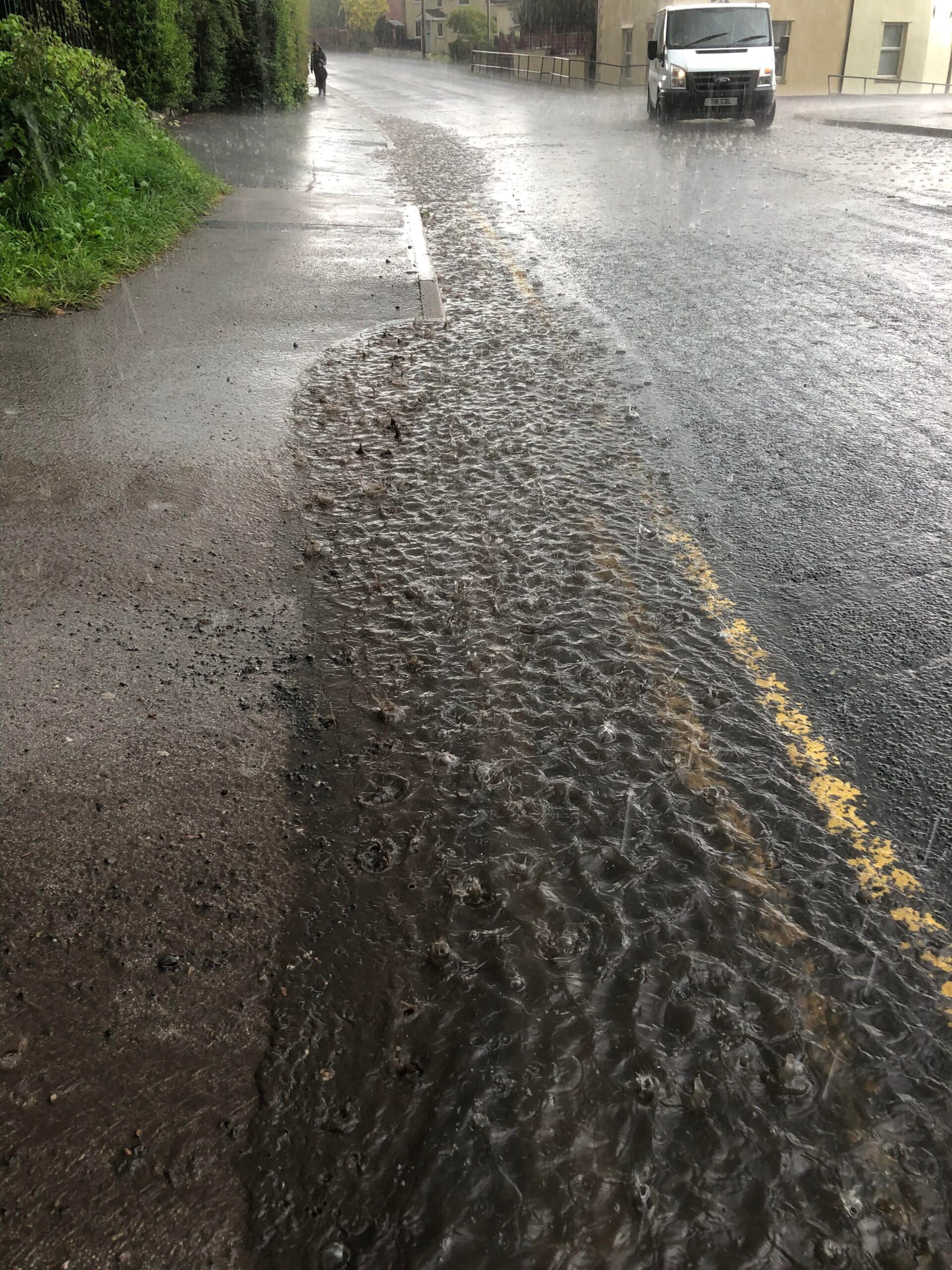This week, our Director of Operations, Jo Bradley, has been out and about counting insects in the River Lostock, in Lancashire.
Jo has been trained in the completion of Riverfly assessments and she has carried out her first surveys. The River Lostock is affected by stormwater pollution from the local motorway network and Stormwater Shepherds UK is part of a group of organisations that are delivering a project to measure the impact of the motorway runoff on the river. Alongside the chemical analysis of discharges, the project includes Riverfly sampling upstream and downstream of the pollution over a couple of years. The team are hoping to sample river sediment too, to see if there is pollution in the bed of the river.
Why are we counting invertebrates?
For several decades, we have known that the best way to measure the health of a river is to study the population of invertebrates living in the river. These invertebrates are affected day-to-day by the water quality, and if there is an ongoing pollution problem, the population will alter. If there is a chronic organic pollution, that will affect the species that are found and the abundance of individuals within those species. A chronic toxic pollution may reduce the number of species and the numbers of individuals and cause deformities and stunted growth. An acute pollution incident can completely wipe out the invertebrates from the river completely for a period of time.
By counting the number of species present, and the number of individuals of each species, you can get a good indication of the health of the river. This is done routinely by the Environment Agency, although the number of locations that they monitor and the number of samples per year has dropped significantly in recent years as their resources have been cut back. To complete the sampling as the EA do, you need much experience and training, and they identify the invertebrates down beyond species level, and sometimes they look for signs of deformity and stunted growth. This is carried out in a laboratory, usually by a qualified Ecologist with much experience.
What is Riverfly?
However, it is clear that with a little training and photographic identification guides, volunteers and other keen environmentalists can be taught how to carry out a simpler assessment of river health by identifying and counting a limited number of the most common aquatic invertebrates in British rivers. In order to deliver this consistently and using a robust training system, The Riverfly Partnership was created to: protect the water quality of our rivers; further the understanding of riverfly populations; and actively conserve riverfly habitats.
What can you do?
You can be trained to carry out Riverfly assessments too, if you want to monitor the health of your local river. The training includes the health & safety requirements and all the information you need to identify the invertebrates. Have a look at the Riverfly website for more information: https://www.riverflies.org/get-involved
This image shows Jo carrying our her kick-sample to collect the insects in the river.








